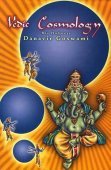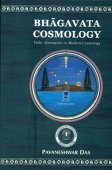Bhumandala, Bhūmaṇḍala, Bhu-mandala, Bhumamdala: 13 definitions
Introduction:
Bhumandala means something in Buddhism, Pali, Hinduism, Sanskrit, Marathi. If you want to know the exact meaning, history, etymology or English translation of this term then check out the descriptions on this page. Add your comment or reference to a book if you want to contribute to this summary article.
In Hinduism
Vaishnavism (Vaishava dharma)
Source: Pure Bhakti: Brhad BhagavatamrtamBhūmaṇḍala (भूमण्डल) refers to:—The middle planetary system within the universe; earth. (cf. Glossary page from Śrī Bṛhad-bhāgavatāmṛta).

Vaishnava (वैष्णव, vaiṣṇava) or vaishnavism (vaiṣṇavism) represents a tradition of Hinduism worshipping Vishnu as the supreme Lord. Similar to the Shaktism and Shaivism traditions, Vaishnavism also developed as an individual movement, famous for its exposition of the dashavatara (‘ten avatars of Vishnu’).
Pancaratra (worship of Nārāyaṇa)
Source: Shodhganga: Kasyapa Samhita—Text on Visha Chikitsa (p)Bhūmaṇḍala (भूमण्डल) (or Pṛthvīmaṇḍala) refers to one of the Pañcabhūtamaṇḍala or “five bhūta-maṇḍalas describing the forms of Garuḍa”, according to the second chapter of the Kāśyapa Saṃhitā: an ancient Sanskrit text from the Pāñcarātra tradition dealing with both Tantra and Viṣacikitsā (Toxicology).—Accordingly, text text dictates that a Garuḍa-upāsaka, the aspirant, must meditate on Garuḍa of the following form—The Kāśyapasaṃhitā describes the different forms of Garuḍa in the five bhūta-maṇḍalas on which the aspirant has to meditate upon to cure the snake-bite victim from the poison which could have killed him. In the earth or bhūmaṇḍala, the aspirant has to meditate on and invoke Garuḍa who is yellow-hued seated in a rectangular seat representing Indra. In the Bhūmaṇḍala, Garuḍa who resembles the golden mountain, must be meditated upon as one rejoicing in four chants of svāhā and innumerable serpents with the cakra or discus, clad in white, sacred thread with massive shoulders touching the heights of the sky and a huge body, ever engaged in stalling poison, demoniac elements and so on.

Pancaratra (पाञ्चरात्र, pāñcarātra) represents a tradition of Hinduism where Narayana is revered and worshipped. Closeley related to Vaishnavism, the Pancaratra literature includes various Agamas and tantras incorporating many Vaishnava philosophies.
Purana and Itihasa (epic history)
Source: archive.org: Shiva Purana - English TranslationBhūmaṇḍala (भूमण्डल) refers to the “earth”, according to the Śivapurāṇa 2.5.14 (“The birth of Jalandhara and his marriage”).—Accordingly, as Vṛndā was married to Jalandhara: “O sage, great festivities were held in the marriage. The rivers and Asuras were happy. The ocean too became extremely happy seeing his son united to a bride. In accordance with the rules he made charitable gifts to the brahmins and others. Those Asuras who had been formerly defeated by the gods and had sought shelter in Pātāla came fearlessly to the Earth (bhūmaṇḍala) and resorted to him. [...]”.

The Purana (पुराण, purāṇas) refers to Sanskrit literature preserving ancient India’s vast cultural history, including historical legends, religious ceremonies, various arts and sciences. The eighteen mahapuranas total over 400,000 shlokas (metrical couplets) and date to at least several centuries BCE.
In Buddhism
General definition (in Buddhism)
Source: Wisdom Library: BuddhismThe Buddhist cosmology divides the bhūmaṇḍala (circle of the earth) into three separate levels:
- Kāmadhātu (Desire realm),
- Rūpadhātu (Form realm),
- and Ārūpyadhātu (Formless realm).
In the Kāmadhātu is located Mount Sumeru which is said to be surrounded by four island-continents. "The southernmost island is called Jambudvīpa". The other three continents of Buddhist accounts around Sumeru are not accessible to humans from Jambudvīpa. Jambudvīpa is shaped like a triangle with a blunted point facing south. In its center is a gigantic Jambu tree from which the continent takes its name, meaning "Jambu Island".
Languages of India and abroad
Marathi-English dictionary
Source: DDSA: The Molesworth Marathi and English Dictionarybhūmaṇḍala (भूमंडल).—n (S) The terraqueous globe. Ex. lagnārthī hiṇḍatāṃ bhū0 ॥.
Source: DDSA: The Aryabhusan school dictionary, Marathi-Englishbhūmaṇḍala (भूमंडल).—n The terraqueous globe.
Marathi is an Indo-European language having over 70 million native speakers people in (predominantly) Maharashtra India. Marathi, like many other Indo-Aryan languages, evolved from early forms of Prakrit, which itself is a subset of Sanskrit, one of the most ancient languages of the world.
Sanskrit dictionary
Source: DDSA: The practical Sanskrit-English dictionaryBhūmaṇḍala (भूमण्डल).—
1) the earth, (terrestrial globe).
2) the circumference of the earth.
Derivable forms: bhūmaṇḍalam (भूमण्डलम्).
Bhūmaṇḍala is a Sanskrit compound consisting of the terms bhū and maṇḍala (मण्डल).
Source: Cologne Digital Sanskrit Dictionaries: Shabda-Sagara Sanskrit-English DictionaryBhūmaṇḍala (भूमण्डल).—n.
(-laṃ) The terrestrial globe.
Source: Cologne Digital Sanskrit Dictionaries: Cappeller Sanskrit-English DictionaryBhūmaṇḍala (भूमण्डल).—[neuter] the terrestrial globe.
Source: Cologne Digital Sanskrit Dictionaries: Monier-Williams Sanskrit-English Dictionary1) Bhūmaṇḍala (भूमण्डल):—[=bhū-maṇḍala] n. ‘earth-circle’, orbis terrarum, the terrestrial globe, [Cāṇakya; Purāṇa; Kathāsaritsāgara] etc.
2) [v.s. ...] the circumference or circuit of the earth, [Sūryasiddhānta]
[Sanskrit to German]
Sanskrit, also spelled संस्कृतम् (saṃskṛtam), is an ancient language of India commonly seen as the grandmother of the Indo-European language family (even English!). Closely allied with Prakrit and Pali, Sanskrit is more exhaustive in both grammar and terms and has the most extensive collection of literature in the world, greatly surpassing its sister-languages Greek and Latin.
Kannada-English dictionary
Source: Alar: Kannada-English corpusBhūmaṃḍala (ಭೂಮಂಡಲ):—
1) [noun] the entire earth.
2) [noun] an extent of land.
--- OR ---
Bhūmaṃḍaḷa (ಭೂಮಂಡಳ):—[noun] = ಭೂಮಂಡಲ [bhumamdala].
Kannada is a Dravidian language (as opposed to the Indo-European language family) mainly spoken in the southwestern region of India.
See also (Relevant definitions)
Partial matches: Bhu, Mandala.
Full-text: Jambudvipa, Bhuvalaya, Mala Ghalanem, Mrityupantha, Pushkaradvipa, Bhutamandala, Ilavritavarsha, Pancabhuta, Pancabhutamandala, Catuhsvaha, Kshvela, Svahacatushka, Samstambhaka, Kanakacala, Ullasat, Kotipannaga, Samstambha, Prithvimandala.
Relevant text
Search found 5 books and stories containing Bhumandala, Bhu-mandala, Bhū-maṇḍala, Bhū-maṇḍaḷa, Bhumamdala, Bhūmaṃḍala, Bhūmaṃḍaḷa, Bhūmaṇḍala, Bhūmaṇḍaḷa; (plurals include: Bhumandalas, mandalas, maṇḍalas, maṇḍaḷas, Bhumamdalas, Bhūmaṃḍalas, Bhūmaṃḍaḷas, Bhūmaṇḍalas, Bhūmaṇḍaḷas). You can also click to the full overview containing English textual excerpts. Below are direct links for the most relevant articles:
Gati in Theory and Practice (by Dr. Sujatha Mohan)
Performance of Gati through Maṇḍalas < [Chapter 2 - Concept and technique of Gati]
Garga Samhita (English) (by Danavir Goswami)
Verse 2.13.31 < [Chapter 13 - The Story of Śeṣa]
Verse 2.13.27 < [Chapter 13 - The Story of Śeṣa]
Verse 2.13.25 < [Chapter 13 - The Story of Śeṣa]
Brihad Bhagavatamrita (commentary) (by Śrī Śrīmad Bhaktivedānta Nārāyana Gosvāmī Mahārāja)
Verse 2.2.8-9 < [Chapter 2 - Jñāna (knowledge)]
Verse 2.2.46 < [Chapter 2 - Jñāna (knowledge)]
Verse 2.4.155-157 < [Chapter 4 - Vaikuṇṭha (the spiritual world)]
The Skanda Purana (by G. V. Tagare)
Chapter 14 - The Greatness of Catussamudra < [Section 1 - Avantīkṣetra-māhātmya]
Shat-cakra-nirupana (the six bodily centres) (by Arthur Avalon)
Verse 40 < [Section 7]
Related products

